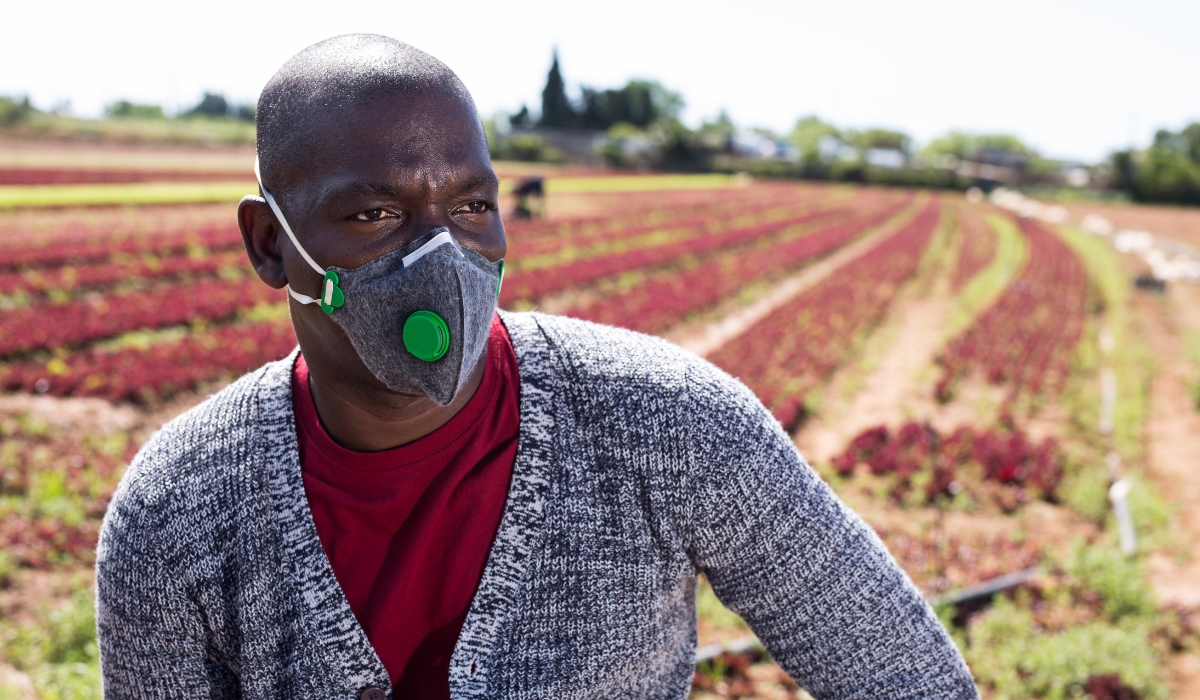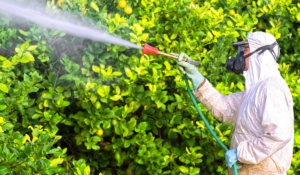Agriculture, while vital, stands as one of the nation’s most challenging industries in terms of safety. Shockingly, every year, over 2 million young individuals under the age of 20 find themselves confronted with safety risks linked to farming.
Farming environments often expose workers to various airborne hazards, including dust, pesticides, and mold spores.
In recognition of the dangers, National Farm Safety and Health Week was observed from September 17 to 23, 2023, aimed at shedding light on a vital aspect of agricultural safety – respiratory protection for farm workers. While the event may have only lasted a week, the need for safety remains a year-round responsibility.
Here, we’ll delve into the importance of respiratory protection for farm workers and explore best practices for ensuring the well-being of this invaluable workforce.
Let’s break it down.
Related Article: REPORT: Occupational Pesticide Exposure Linked to COPD
Related Article: Key Benefits of a Workplace Respiratory Protection Program

Understanding Respiratory Hazards in Agriculture
Agricultural settings present a unique set of respiratory risks.
Dust from tilling, harvesting, and processing activities can contain harmful particles and microorganisms. Additionally, the use of pesticides and exposure to animal dander can further exacerbate respiratory concerns.
Addressing these hazards is paramount to safeguarding the health of farm workers.
The Role of Respiratory Protection for Farm Workers
Respiratory protection serves as a vital line of defense against inhaling harmful substances. This includes various types of equipment, such as masks, respirators, and air purifying devices.
Selecting the appropriate respiratory protection depends on the specific tasks and potential hazards faced by farm workers.
- See OSHA’s Guidelines on Respiratory Protection
Navigating Respiratory Protection Options
1. Disposable Masks
Disposable masks, such as N95 respirators, offer basic protection against airborne particles.
They are suitable for tasks with low to moderate exposure risks, like handling dry feeds or light dusting activities. However, it is essential to ensure a proper fit for these masks to be effective.
2. Half-Face Respirators
For tasks involving higher exposure risks, like pesticide application or handling moldy hay, half-face respirators provide enhanced protection.
These respirators cover the nose and mouth, filtering out a broader range of contaminants. Keep in mind that like the full-face versions, workers using half-face respirators will need to undergo fit testing to guarantee a secure seal.
3. Full-Face Respirators
Full-face respirators offer comprehensive coverage, protecting the eyes, nose, and mouth.
These remain most suitable for tasks with the highest exposure risks, such as working in enclosed spaces with significant dust or chemical concentrations.
Proper training and regular maintenance are imperative when using full-face respirators.
Ensuring Proper Fit and Maintenance
Regardless of the type of respiratory protection chosen, a snug fit is crucial for effectiveness.
Employers should provide fit testing to ensure each worker’s equipment fits securely.
Regular maintenance, including cleaning and replacing filters, is equally important to sustain the protective capabilities of the equipment.
Need to schedule respirator fit testing? We’ve got you covered, right here.
Training and Education
Adequate training is the cornerstone of any successful respiratory protection program.
Farm workers should receive comprehensive instruction on the proper use, storage, and maintenance of their respiratory protection. Additionally, they should receive education to recognize early signs of respiratory distress and understand when to seek medical attention.
- See OSHA’s Safety and Health Topic page on Respiratory Protection.
- See OSHA’s Safety and Health Topics page on Cotton Dust.
- See NIOSH Hazard Control page on Control of Organic Dusts From Bedding Choppers in Dairy Barns.
- See OSHA’s Safety and Health Topics page on Ventilation.
Ongoing Monitoring and Evaluation
Like any other industry, programs involving respiratory protection for farm workers should include regular evaluation. This includes reviewing incident reports, conducting audits, as well as seeking worker feedback.
Adjustments to the program should be made based on these assessments to ensure continued effectiveness.
- See OSHA e-Tool on Youth in Agriculture
Bringing It Together
Employers need to prioritize the well-being of farm workers by emphasizing respiratory protection.
By understanding the unique respiratory hazards present in agriculture and implementing appropriate measures, you can create a safer and healthier work environment for those who sustain our agricultural industry.
Remember: respiratory protection for farm workers is not only a responsibility – it’s an investment in the future of farming.
About Worksite Medical
In most cases, OSHA requires medical surveillance testing, and at no cost to employees.
Worksite Medical makes that program easier with mobile medical testing.
We conduct on-site respirator fit tests, as well as audiometric exams, pulmonary function tests and heavy metal lab work, right on your job site. We also keep accurate, easy-to-access medical records for your convenience. You’ll keep your employees at work, and stay ahead of OSHA inspections.




